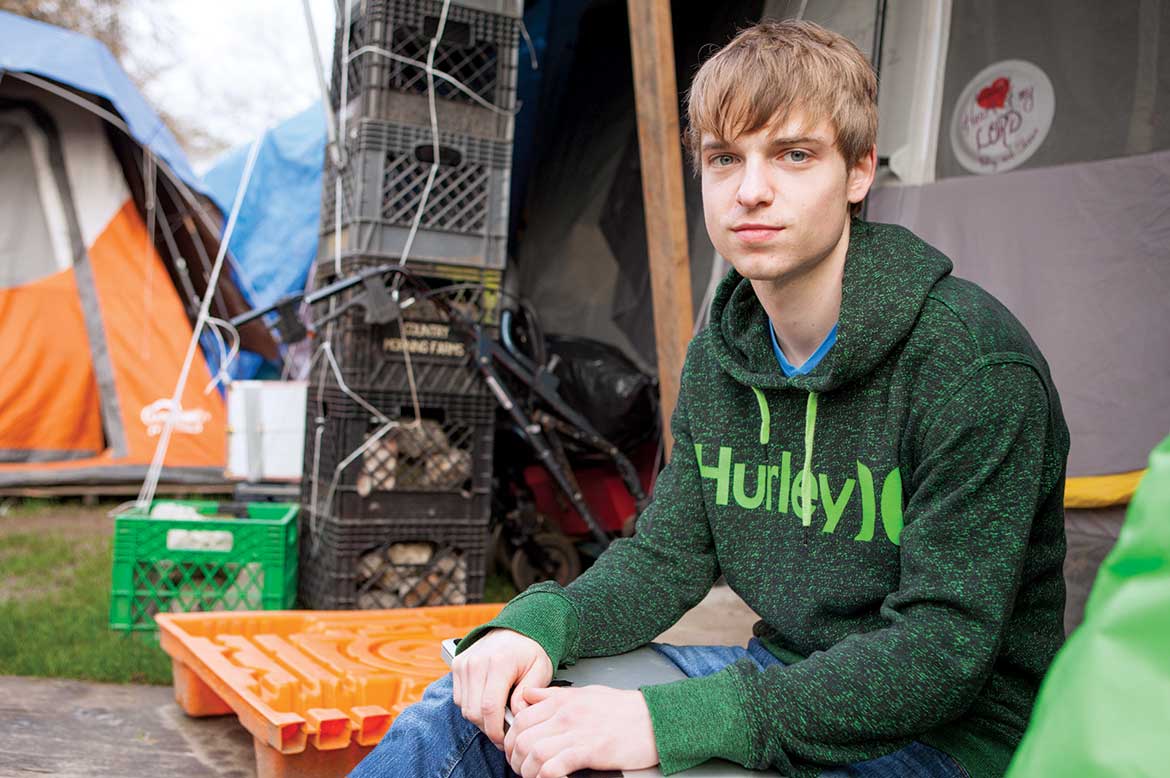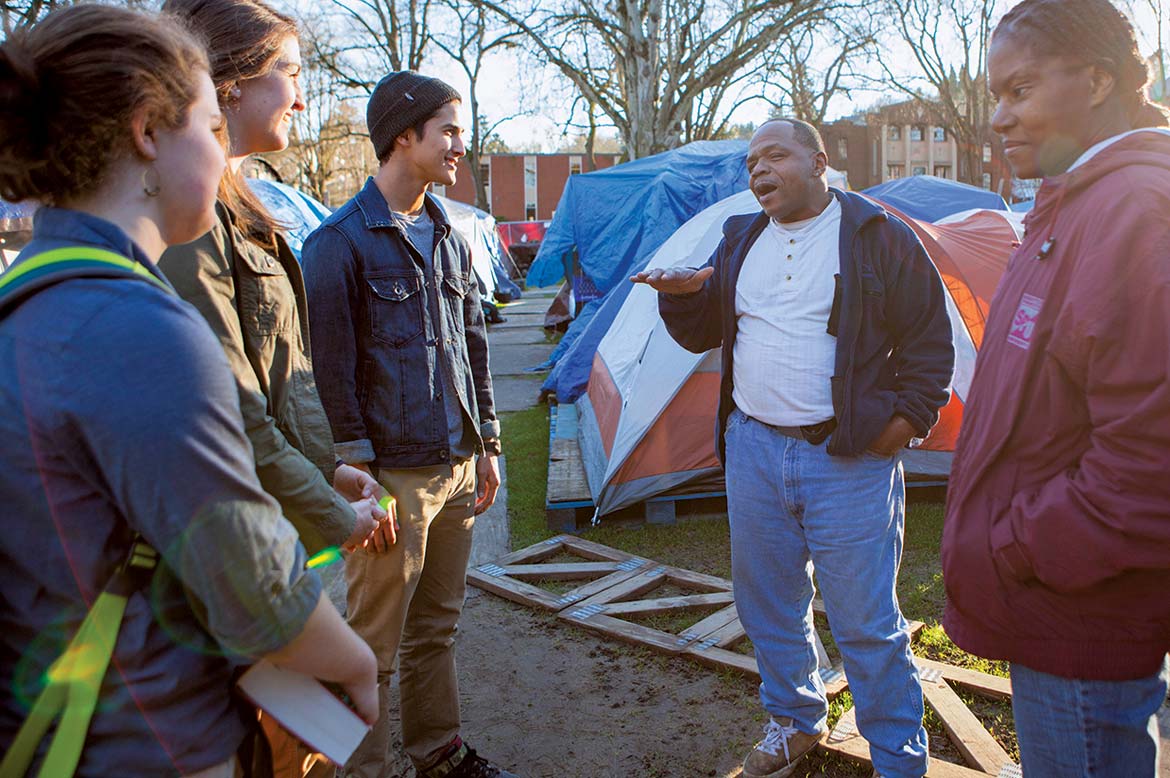
Alex Cnossen spent many hours with residents of Tent City 3, a self-governed community of up to 100 homeless individuals. The encampment takes in approximately 700 people a year, and moves to different sites all over Seattle. SPU hosted the encampment for three months this winter.
From a distance, the homeless encampment in Seattle Pacific University’s Tiffany Loop seemed to be an unkempt cluster of tarps
and tents.
But when I looked closer, details emerged.
A man’s size 10 boot print was pressed into the mud by the front desk. A cardboard sign that read, “Home Sweet Homeless,” hung outside a nearby tent. Inside another tent, a book rested on a sleeping bag.
For three months, roughly 65 homeless men and women lived in the middle of my campus. As editor-in-chief for The Falcon, the campus newspaper, I helped to tell their stories. In the process, Tent City3 residents helped me question my own stereotypes and judgments.
When I returned to campus after Christmas break, I was startled by the spread of tents across SPU’s well-manicured lawn. I saw men and women wearing donated clothing, sleeping in ripped tents, and surviving by the generosity of others. I was suddenly very aware of the Christmas gifts I couldn’t fit in my suitcase from home.
But the more I visited Tent City and wrote about the residents, the less I cared about our differences, and the more I wanted to hear their stories.

Eric, a TC3 resident, says, “Coming to SPU was like sitting at the table the Lord had set for us. They made us feel welcome.”
On my first visit, I met a man named Tony. He loves computer games, has never shaved his chin, and always wears his leather jacket.
Right when I arrived, he offered me a tour. As he escorted me through the roughly half-acre encampment, he showed me where residents eat, shower, and watch TV. When we got to the communal tent, he waved at the beds, blankets, and clothing strewn about the room, and said, “It’s kind of like your dorms.”
After talking with him some more, I discover that we are connected — not just by Seattle Pacific — but also by a love for all forms of pop culture. Like me, he’s seen Fight Club, listens to the Star Wars soundtrack, and looks forward to the winter season of anime. On my second visit, we compared our music and movie collections — mine stored on a MacBook Pro, his on a beat-up Acer laptop.
Unlike me, he suffers from post-traumatic stress disorder, attention deficit disorder, and short-term memory loss. He’s had a heart attack, a small stroke,
and a triple bypass surgery. He takes 13 pills a day, has a cat named Butters, and was born in Michigan.
He came to Seattle from Arkansas in search of a job. Instead, he found Tent City.
“Thank God I found this place,” Tony said. “I’ll tell you that much.”
Like Tony, I thank God for the residents of Tent City 3. Their tents are now gone, but their lessons remain.
He explained the importance of empathy and presence. I remember him saying, “You guys don’t ask about where we’re from, what we’ve done. You’re just here with us.”
My visits taught me to see the world from someone else’s perspective. I learned to look beyond the mud and the signs, and to listen to the stories being told within the tents.